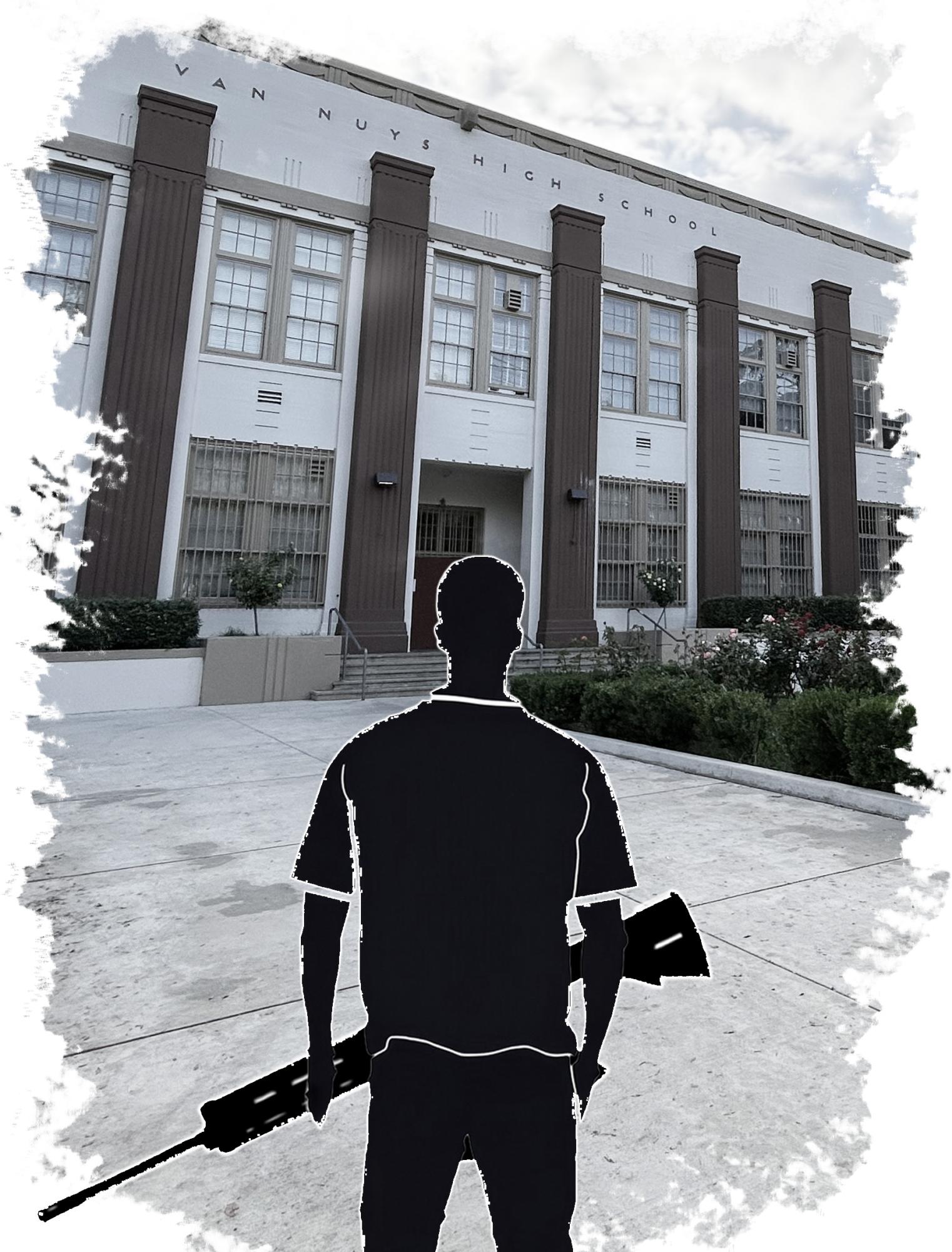In Finland, with its 5.6 million people, hunting is extremely popular. As a result there are 1.5 million firearms — nearly one for every four residents. Similarly, Switzerland, home to 8.7 million, boasts 2 million privately owned guns. Yet, while hunting thrives, mass shootings don’t. Switzerland hasn’t had one in over 20 years, and Finland can count theirs on one hand.
Meanwhile, numbers of mass shootings in the U.S. have shot up in the last three years. According to a study by Everytown, a nonpartisan gun violence prevention organization in America, there have been at least 600 mass shootings per year since 2020, with 2022 holding the record at 686 incidents and a total of over 600 people killed. As of mid-October 2023, the nation is on track to reach 700 mass shootings.
Gun violence has always been prevalent in the United States. In recent years, mass shootings (widely defined as incidents in which four or more people are shot and wounded or killed, excluding the shooter) have been on the rise.
It’s become clearer than ever that gun violence is a problem. The topic has been hotly debated throughout the modern age, and countless gun laws have been passed around the country. Nonetheless, America consistently fails to keep the numbers down.
The second amendment of the Constitution established the right to bear arms, an idea that has been subject to heated controversy. While avid supporters champion the individual right to be able to defend themselves, infamous incidents like the Sandy Hook Elementary and Columbine High shootings compel citizens to speak up out of concern for the safety of their loved ones.
What ultimately results from the clamor about gun control and prevention is an America that is no safer than before.
As a nation, we need to analyze what can be done to lower the injuries, death and trauma that have terrorized the country for decades.
Some politicians and communities advocate for outfitting teachers with their own firearms, claiming that the possibility of immediate intervention could make schools safer. While rural communities without their own police department have shown considerable support, many people, especially teachers, believe otherwise.
A survey published by RAND corporation, a nonpartisan American research institute, revealed teachers’ opinions: 26 percent were neutral, 20 percent said schools would be made safer and the remaining majority said schools would be less safe.
Opponents against the idea object that taking down a school shooter isn’t part of the role educators should have on campus. It makes even less sense taking into consideration that half the time, the perpetrators are current or former students, as shown in a report by the U.S. Government Accountability Office. In fact, keeping a firearm inside classrooms could eliminate the biggest obstacle student shooters face: gaining possession of a gun.
One popular discussion involves stricter gun control. By restricting overall access to firearms, guns would fall into the wrong hands less often – at least in theory. In practice, the effectiveness of such policies is questionable.
According to a 2017 study by the Statista Research Department, there are 120 civilian-owned firearms per 100 residents in the U.S., more than double the rate of the next highest country, Yemen. The most glaring factor that contributes to the horrific trend of mass shootings is the sheer number of guns present in the nation.
A 2020 National Shooting Sports Foundation report, using data from the Bureau of Alcohol, Tobacco, Firearms and Explosives, estimated 433 million firearms in American civilian possession. Evidently, the U.S. population is packing a heck of a lot of guns, an amount already in circulation that won’t simply disappear, no matter how many laws we pass.
The criminals that commit these horrific acts of slaughter are literally defined as people who break the law. Thus, it’s important to recognize that making gun control even tighter, or merely automatic and semi-automatic guns, won’t avert school shootings.
Instead, clamping shut any loopholes in background checks and making them more accurate should be at the head of gun safety discussions. Frank Campbell, a former senior attorney for the FBI and the Department of Justice, explains that the background check system is only as good as the records it has access to.
In determining whether an applicant seeking to purchase a gun legally should be barred from doing so, the FBI utilizes three databases: the Interstate Identification Index, the National Crime Information Center and the NICS Indices. Combined, these databases flag criminal history and other records like mental health and immigration status.
In a 2020-2021 report, the FBI stated the federal background check had denied more than two million firearm transactions since its inception in 1998.
However, these databases have been inadequately supplied in the past due to inefficiency or resistance. According to a Bureau of Justice Statistics report, there were only 2.1 million active-warrant records in the NCIC database of 7.8 million such records in the state warrant databases.
Mental health records pose particular problems, as some states refuse to forward them to the FBI alongside other information, citing privacy laws. Had the mental health records of Seung-Hui Cho, who had a history of severe psychiatric illness, been accurately recorded in the database, he would have been flagged and denied purchase of a firearm. In 2007, Cho went on to shoot up his school in the Virginia Tech massacre, one of the deadliest school shootings in American history that resulted in 32 deaths.
States with a history of providing incomplete records to the appropriate databases have to comply with what should be standard procedures promoting safety and security. As only law enforcement agencies can legally access these databases, privacy laws should be amended in order to allow a smooth flow of mental health and other disqualifying records that promotes tighter background checks.
Sparking a prolonged, emotional debate about safety versus constitutional freedom every time we address gun control doesn’t do the country any good.
Unless meaningful change happens fast, more shootings will continue to devastate lives and communities.




